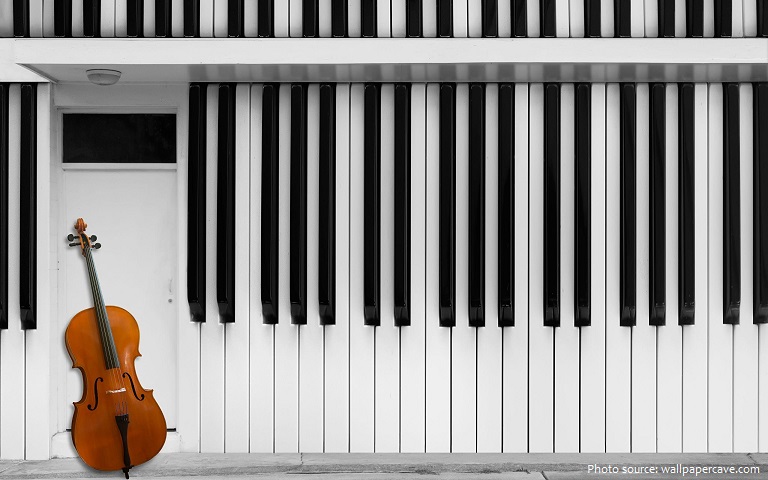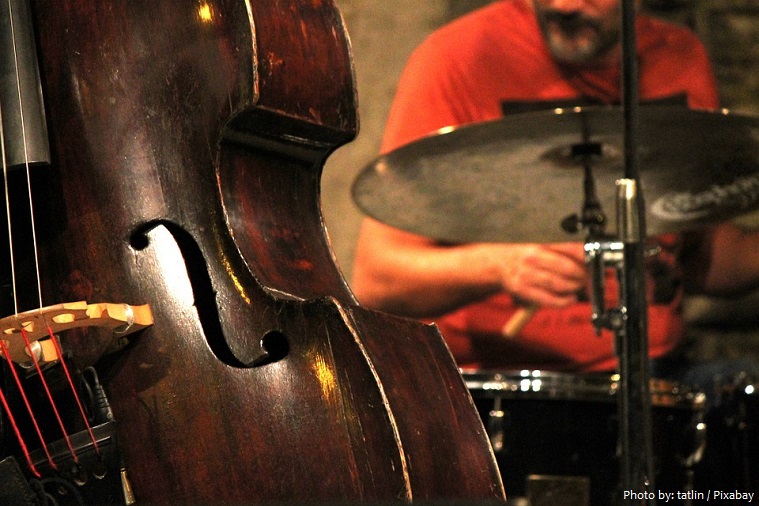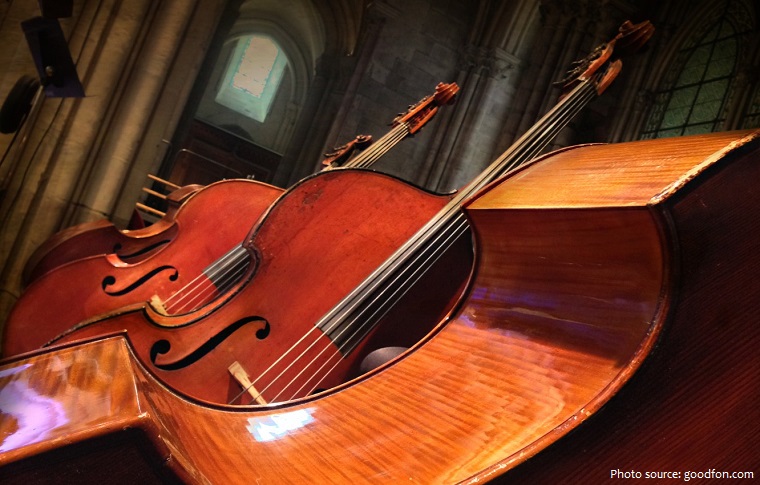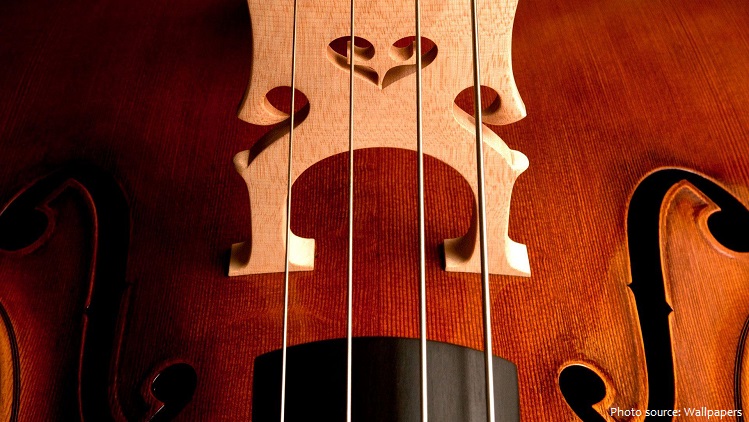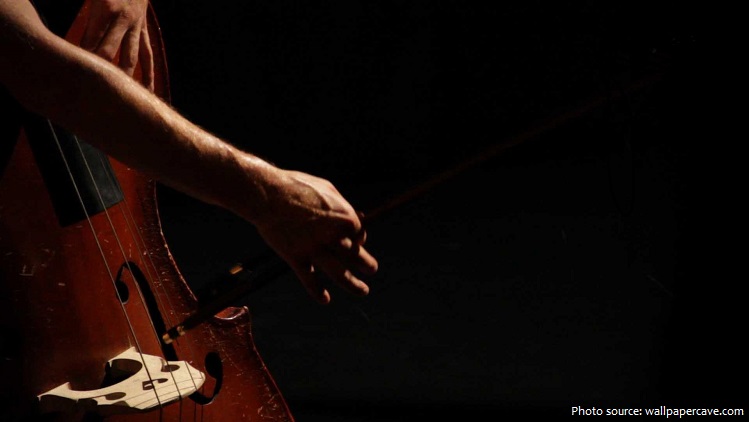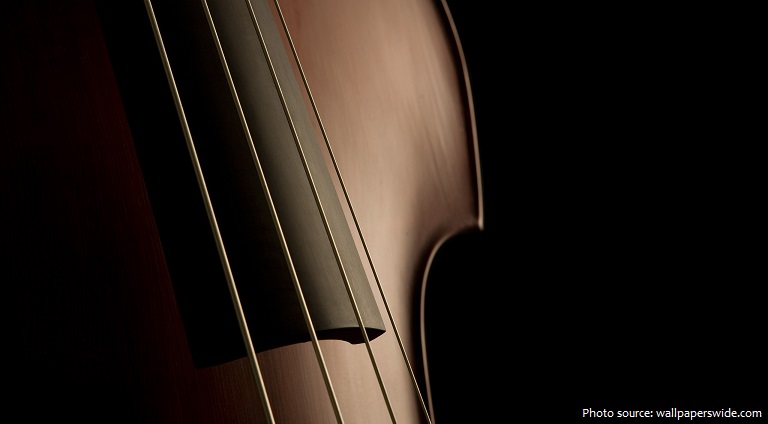The double bass is the largest and lowest-pitched bowed string instrument in the modern symphony orchestra.
It is also known by many other names including contrabass, string bass, bass, bass viol, bass fiddle, or bull fiddle.
The double bass is a standard member of the orchestra’s string section, as well as the concert band, and is featured in concertos, solo, and chamber music in Western classical music.
It is also used in a range of other genres, such as jazz, 1950s-style blues and rock and roll, rockabilly, psychobilly, traditional country music, bluegrass, tango and many types of folk music.
The double bass has two basic designs — one shaped like a viol and the other like a violin — but there are other designs, such as that of a guitar.
It varies considerably in size, the largest normally being under 1.8 metres (6 feet) in total length. The body itself, without the neck, may be up to 1.4 metres (4.5 feet) for a full-size instrument, about 1.2 metres (3.8 feet) for a three-quarter size, and only slightly larger than a cello for the small chamber bass, or bassetto.
The materials most often used in double bass construction for fully carved basses (the type used by professional orchestra bassists and soloists) are maple (back, neck, ribs), spruce (top), and ebony (fingerboard, tailpiece).
Double bass bows vary in length from 60 to 75 cm (24 to 30 in). In general, a bass bow is shorter and heavier than a cello bow. Pernambuco, also known as Brazilwood, is regarded as an excellent quality stick material, but due to its scarcity and expense, other materials are increasingly being used.
The strings are usually tuned to the notes E1, A1, D2 and G2.
A fifth string is occasionally added in jazz band basses, at the top of the register to allow high notes to be played more easily – many basses, rather than having a fifth string, have a mechanical
device with levers that increases the length of the fourth string.
Like other violin and viol-family string instruments, the double bass is played either with a bow or by plucking the strings.
Despite the size of the instrument, it is not as loud as many other instruments, due to its low musical pitch. In a large orchestra, usually between four and eight bassists play the same bassline in unison to produce enough volume.
The double bass is generally regarded as the only modern descendant of the viola da gamba family of instruments, a family which originated in Europe in the fifteenth century. As such, it can be described as a “bass viol.”
The earliest known concerto for double bass was written by Joseph Haydn c.1763, and is presumed lost in a fire at the Eisenstadt library.
The earliest known existing concertos are by Carl Ditters von Dittersdorf, who composed two concertos for the double bass and a Sinfonia Concertante for viola and double bass.
Wolfgang Amadeus Mozart‘s concert aria, Per Questa Bella Mano, K.612 for bass, double bass obbligato, and orchestra contains impressive writing for solo double bass of that period. It remains popular among both singers and double bassists today.
Before the 20th century, many double basses had only three strings, in contrast to the five to six strings typical of instruments in the viola da gamba family or the four strings of instruments in the violin family.
The instrument’s standard English name “double bass” may be derived from the fact that it is approximately twice as large as the cello, or because the double bass was originally used to double the cello part an octave lower.
A person who plays this instrument is called a bassist, double bassist, double bass player, contrabassist, contrabass player, or simply bass player.
In jazz, blues, rockabilly and other genres outside of classical music, this instrument is commonly called the upright bass, standup bass or acoustic bass to distinguish it from the electric bass guitar.
Despite the size of the instrument, it is relatively quiet, primarily due to the fact that its range is so low.
When the bass is being used as an ensemble instrument in orchestra, usually between four and eight bassists will play the part in unison. In jazz and blues settings, the bass is normally amplified.
The lowest note of a double bass is an E1 (on standard four-string basses) at approximately 41 Hz.
The largest double bass measured 5.55 m (18 ft 2.7 in) tall and 2.13 m (7 ft) wide. It was made by Gigezunft Doppleschwand in Switzerland and completed on 28 October 2006.
